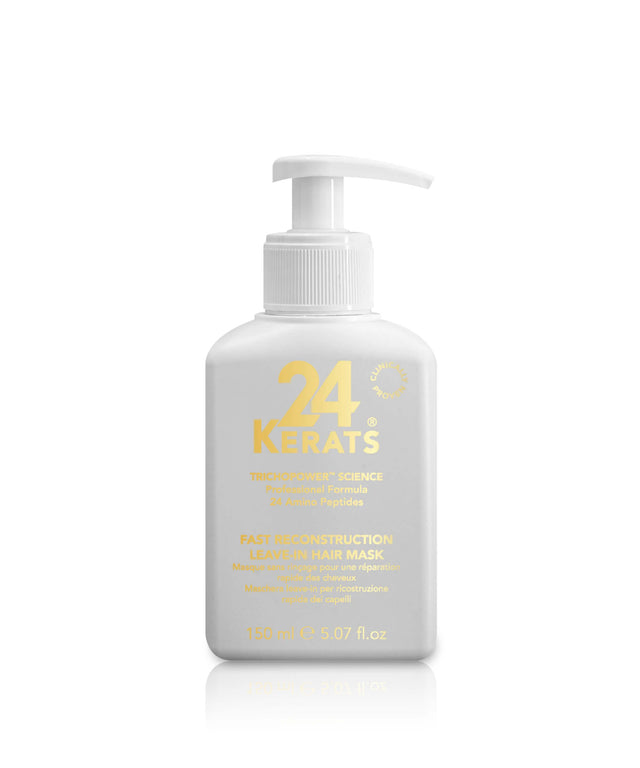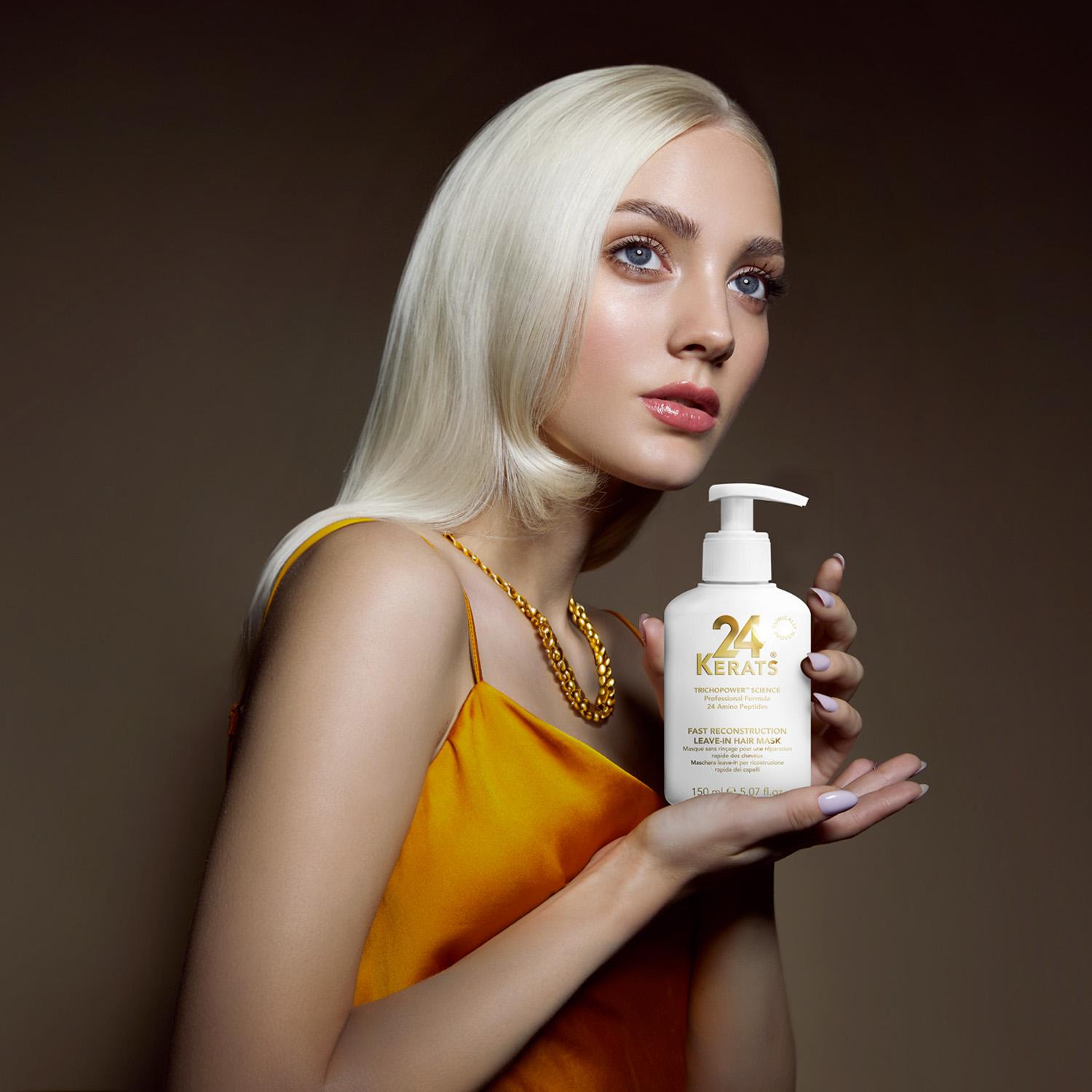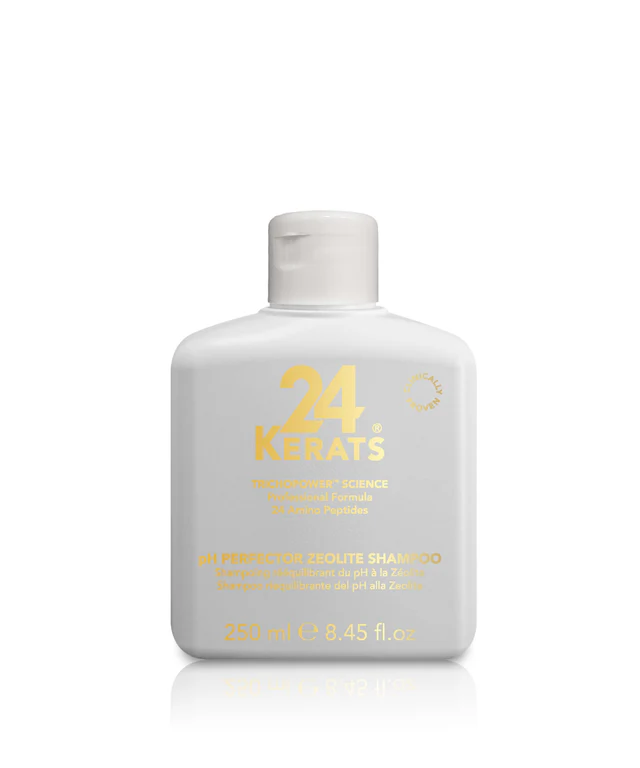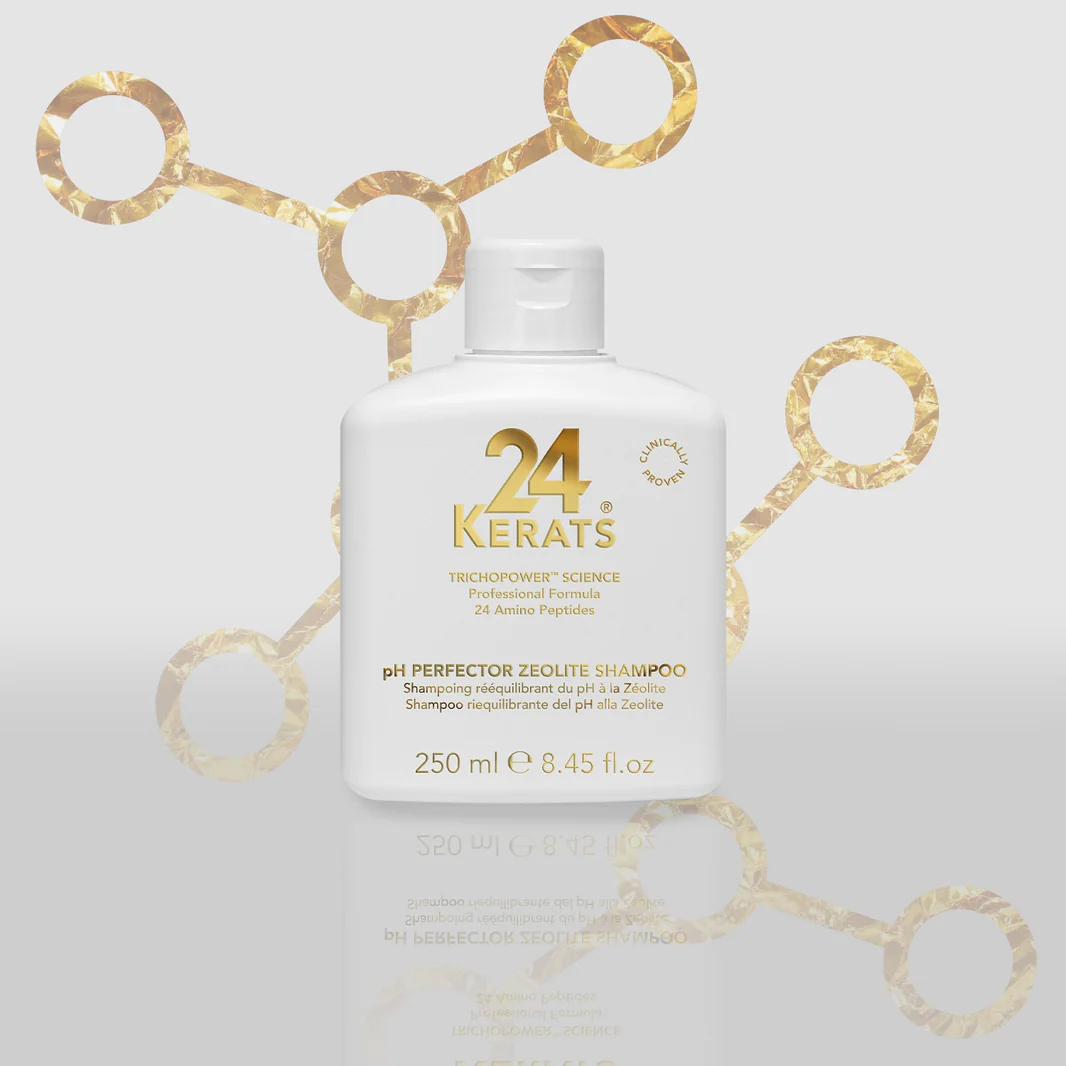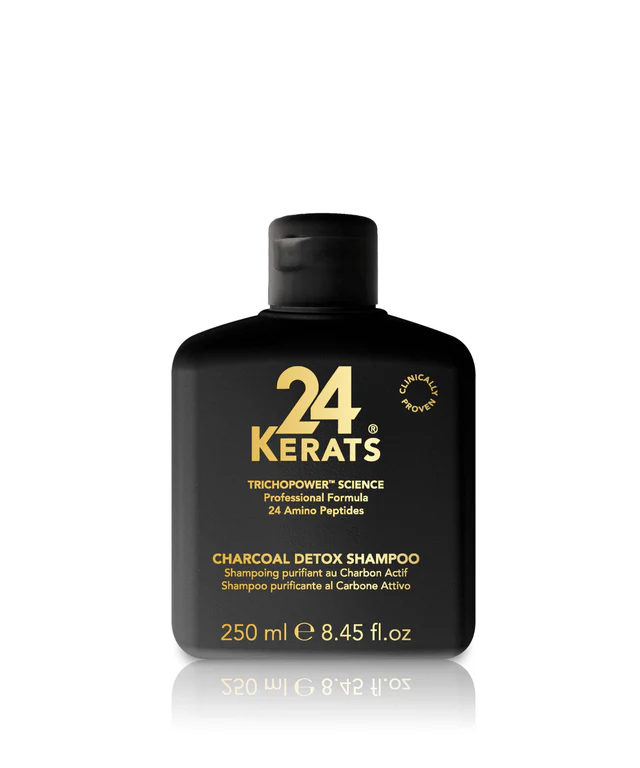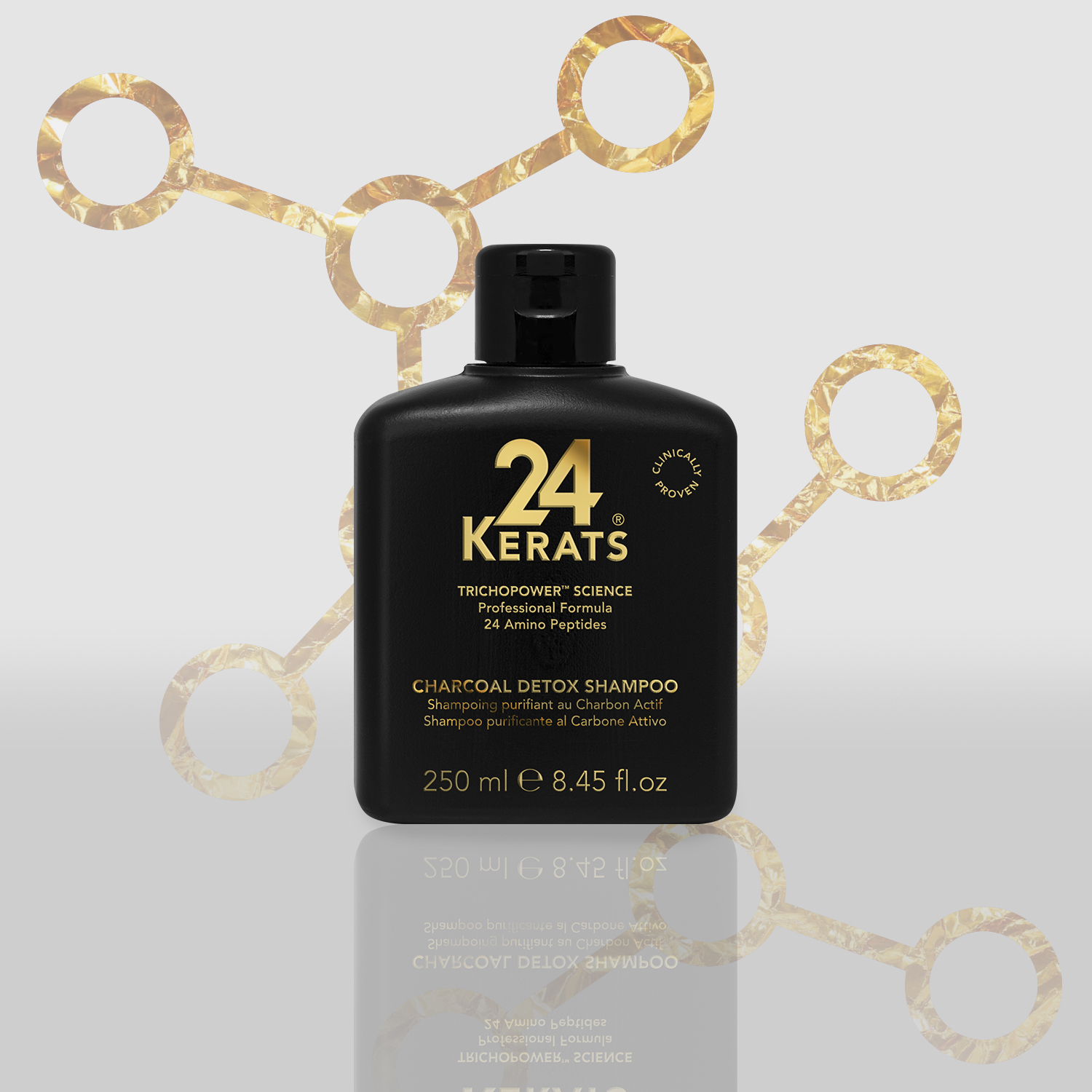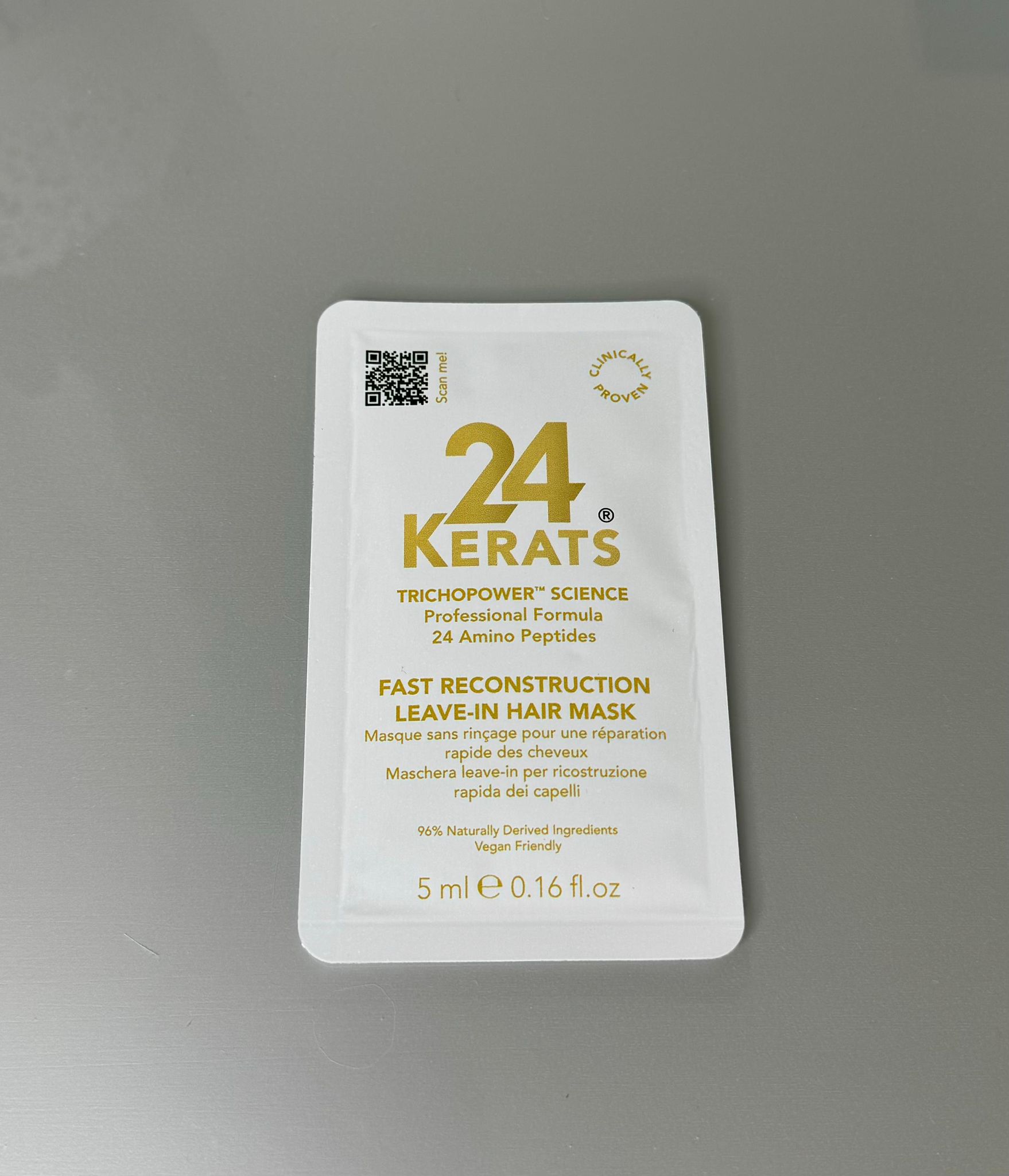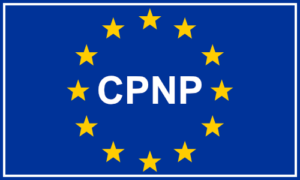DISCOVER 24 KERATS® TRICHOPOWER™
24 KERATS® TRICHOPOWER is inspired by the biomimetic science of keratin — mimicking the structure and function of natural human keratin using powerful plant-based and natural ingredients.
It delivers professional-level repair and strength, without harsh chemicals.
Keratin is a natural protein produced by the human body. It forms the fibrous structure of hair, nails, and skin — and is the main structural component of the hair fiber.
Keratin is made up of 18 amino acids, including 17 essential ones and one key derivative: Cystine.
Cystine is a sulfur-rich amino acid that plays a crucial role in hair strength and structure. Although it makes up just 16–18% of keratin by volume, it forms strong disulfide bonds that hold the keratin fibers together — giving your hair its shape, resilience, and durability.
discover HOW TO REPLICATE KERATIN IN YOUR HAIR
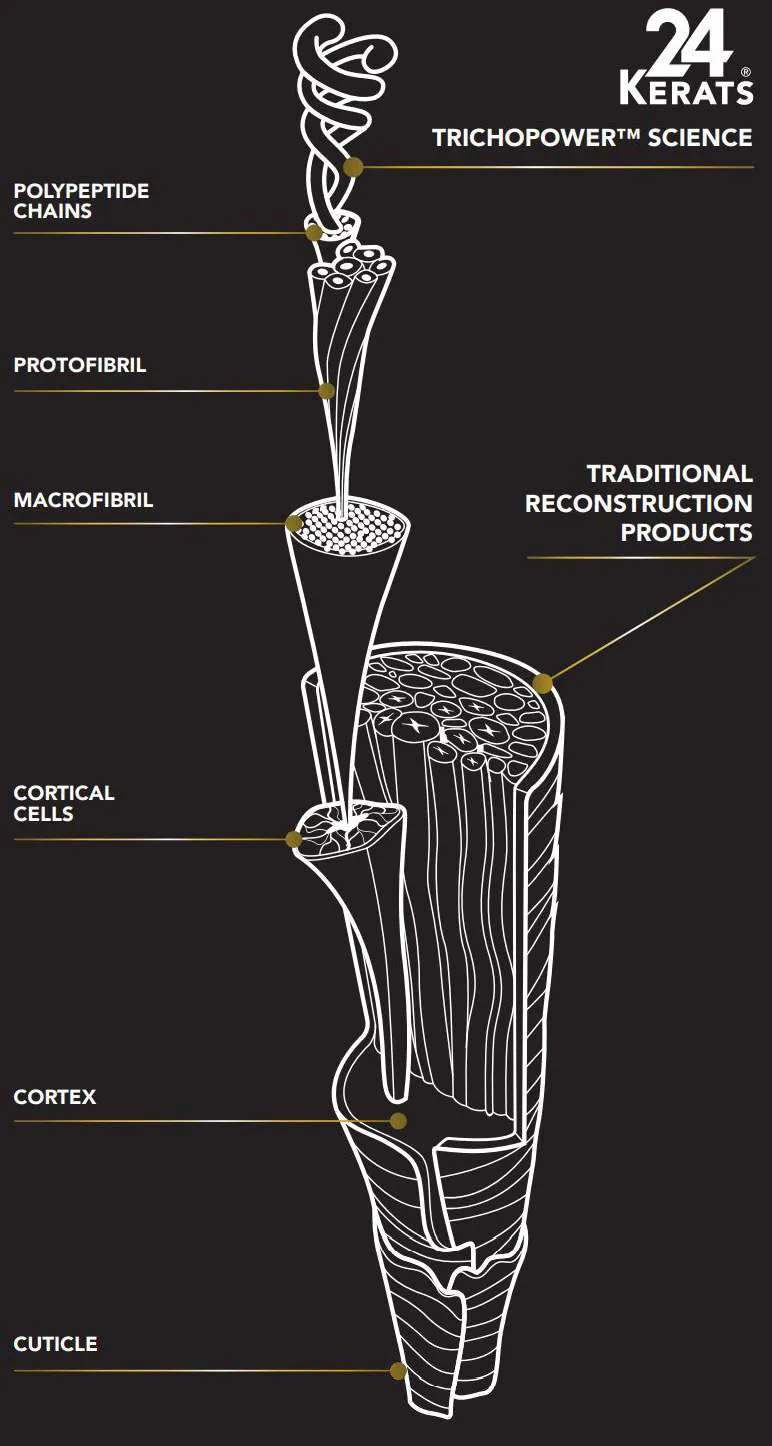
Keratin doesn’t exist in a single form — it’s made up of multiple chains that organize into protofibrils and then microfibrils.
These organized fibers are surrounded by an amorphous keratin matrix, forming the main structural layers of the hair: the medulla, the cortex (length), and the cuticle.The structure of keratin is shaped by disulfide bonds, along with salt bridges and hydrophobic interactions. These bonds determine whether keratin becomes a structured fibril or remains in an amorphous (non-structured) state. While the medulla contains mostly amorphous keratin, the cortex and cuticle consist of protofibrils, microfibrils, and fibrils.
Importantly, the hair’s structure is influenced not just by the presence of amino acids, but by their proportion, arrangement, and the way they interact within the keratin matrix.
Even though the amino acid composition stays the same, keratin can take on different structural forms — fibrillar or amorphous — depending on how those amino acids are organized.Mimicking keratin is complex, because it’s not just about copying its components, but replicating its entire structure. And since the amino acids are already tightly bound within keratin chains, their bioavailability is naturally low, making true biomimicry a scientific challenge.
A WIDE AND VALUABLE RANGE OF AMINO ACIDS
BIOMIMETIC PEPTIDES
Hydrolysates are smaller protein fragments—oligopeptides and polypeptides—derived from larger protein structures. Their advantage lies in their size: these pre-broken-down molecules act as ready-to-use building blocks for hair. When applied, they help rebuild damaged structures caused by:
Physical stress (e.g., heat styling, brushing)
Chemical stress (e.g., coloring, bleaching)
Environmental stress (e.g., sun exposure, pollution)
In addition to protein hydrolysates, 24Kerats includes a biomimetic biopeptide specifically targeted at the hair follicle, working directly at the root level to support stronger, healthier hair growth from within.
HYDROLYZED PLANT PROTEINS
The hydrolyzed proteins used in 24Kerats are carefully selected from soy, rice, and peas—chosen for their ability to closely replicate the amino acid composition of human keratin.
These plant-based hydrolysates deliver high bioavailability: their small molecular size allows them to penetrate the hair structure more easily and act as natural reserves for rebuilding keratin fibers.
The amino acid profiles of each plant source offer unique benefits:
Hydrolyzed Soy Protein: Rich in Aspartic Acid and Glutamic Acid
Hydrolyzed Rice Protein: High in Threonine, Methionine, and Leucine
Hydrolyzed Pea Protein: A complete amino acid spectrum, including
Cysteine, Aspartic Acid, Glutamic Acid, Leucine, Serine,
Valine, Threonine, Proline, Glycine, Alanine,
Phenylalanine, Isoleucine, Histidine, Tyrosine, and Methionine
These bioactive ingredients work synergistically to strengthen, repair, and revitalize the hair fiber, helping to restore elasticity, shine, and resistance from root to tip.
A PERFECT COMBINATION OF 24 AMINO ACIDS
To fully match the amino acid profile of natural human keratin, two essential components must not be overlooked: Arginine and Lysine.
With these included, the formula reaches completion — forming a comprehensive complex of 24 amino acids, perfectly aligned with the structure of keratin in healthy human hair.
This powerful combination of oligopeptides and polypeptides, carefully chained together, acts as ready-made building blocks that the hair can absorb and use to:
Repair structural damage
Restore strength and flexibility
Support healthy growth over time
The result? Hair that’s visibly stronger, shinier, and more resilient — from the inside out.
-
Fast Reconstruction Leave-In Hair Mask
49,00 £ – 118,00 £Price range: 49,00 £ through 118,00 £Select options This product has multiple variants. The options may be chosen on the product page -
-
-


